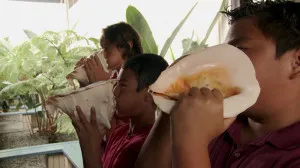
Search

News from Recovering Voices
Words Connect Us: A Reflection on Why Language Matters
By: Laura Sharp
01/14/2015

Language matters–for several reasons. A simple explanation is that it facilitates communication, and allows us to understand each other. But, language plays a far greater role in the world and between people. Language and language diversity has been described as a window into the ‘largely unmapped terrain’ of the human mind. It is what makes us human. It is what connects us as human beings. It holds and fosters the knowledge that has been acquired since the beginning of time. It is thatimportant. In an effort to capture the significance and value of language a new film to be released on PBS this month “Language Matters”with Bob Holman, a film by David Grubin, uses three examples of endangered languages - in Goulburn Island, Australia, Wales, and Hawaii - to illustrate the much greater significance that language holds - and calls attention to the alarming rate at which the world is losing its languages, and what can be done to respond to this crisis.
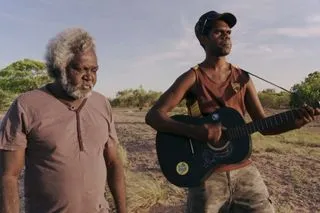
The film, “Language Matters” features three endangered languages from across the world. In Goulburn Island, Australia, Nick Evans a Linguist from the Australian National University who works with native speakers such as Charlie Mangulda explains that most people know and speak multiple languages including for example Mawng, Walang, Kunwinjku, Kunbarlang, Galpu, Iwaidja. Linguist Ruth Singer demonstrates with local speakers how each language represents a piece of who they are, where they are from, where their ancestors are from. They maintain as many languages as possible as a sign of respect when encountering speakers of a language different from their mother tongue. To know and use the multiple languages of the Island is incredibly important; “words have been a survival kit” for Aboriginal people, states Bob Holman. Each language also carries with it a considerable breadth of knowledge and practical information about the surrounding region’s ecology, climate, and biology. As Bob Holman emphasizes, “…without the language, we’d never have that knowledge”.
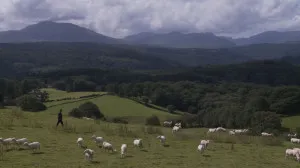
In Wales; Welsh is considered a language success story. The Celtic language, Welsh, despite once being on the brink of extinction, now has over half a million speakers and has thrived for centuries. Welsh is recognized as an official language by the government, and it's poets, language and literary experts, singers and musicians are highly respected and honored in an annual festival celebrating Welsh culture, heritage and language. Efforts to save the language in the 1960s included large protests and demands for recognition of the Welsh language by the national government. The overwhelming influence of English, however, is putting pressure on the survival of the language and ongoing efforts to increase the numbers of Welsh speakers are critical.
In the remote islands of Hawaii, language revitalization has been an ongoing effort for decades. Once a language spoken largely only by their ancestors, Hawaiian language has seen an upsurge in speakers. Documentation of the language as early as the 1900s was pivotal. Puakea Nogelmeier explains how native Hawaiian speakers encouraged others at that time to “write it down…(what had been documented in memory), then it will be safe for the future, those in generations ahead of us will need to know…”. After nearly a century of struggle to keep the Hawaiian language alive, immersion schools or language nests among other efforts have helped gradually revive the numbers of fluent native Hawaiian speakers.
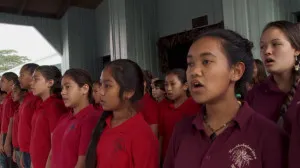
Language documentation, revival, diversity and sustainability- the interconnect themes and challenges facing languages and knowledge highlighted by “Language Matters” - are at the forefront of Recovering Voices’ mission. In an effort to “collaborate with communities worldwide to sustain and celebrate linguistic and cultural diversity”, Recovering Voices curators Dr. Gabriela Pérez Báez (Director), Dr. Joshua Bell and Dr. Gwyneria Issac, staff, collaborators and partners are actively working with communities across the globe in each of these aspects of language and knowledge documentation, celebration, revitalization. Each year the program supports 1-2 native community visits, provides access to its vast ethnographic collections in the National Anthropological Archives and the National Museum of the American Indian offsite collections, and co-organize and support numerous outreach and educational workshops and events such as Breath of Life and Folklife Festival. While these initiatives have led to improved documentation and revitalization of a number of languages, there is an urgent need to act. Every 3 months, another endangered language dies. By the end of this century, a best case scenario is still a loss of over 50% of the world’s languages. At this rate, far more is needed to be done, and soon.
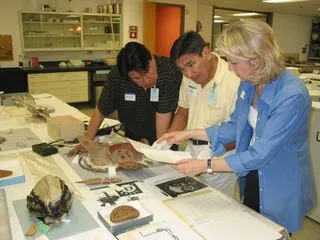
For more information about the Recovering Voices Program at the Smithsonian Institution, visit our website, or send us an email at recoveringvoices@si.edu. To learn more about the film, visit http://www.languagemattersfilm.com/. To see the film at the National Museum of Natural History on January 18, 2015, be sure to RSVP. This event is open to the public and free.